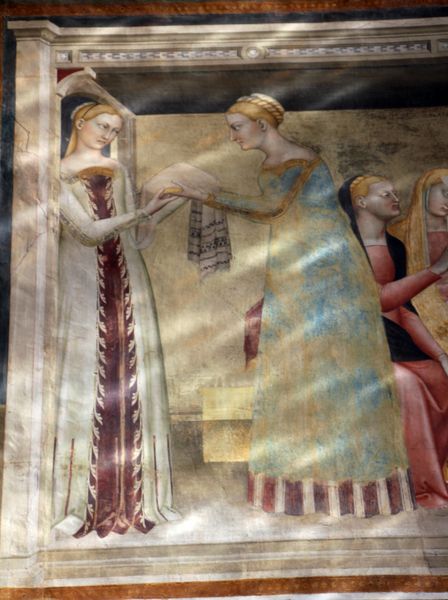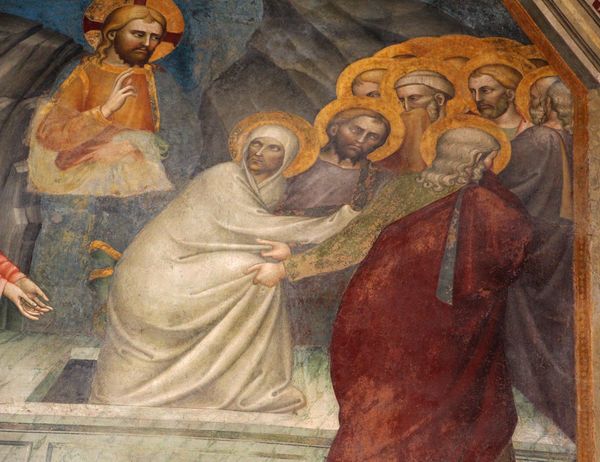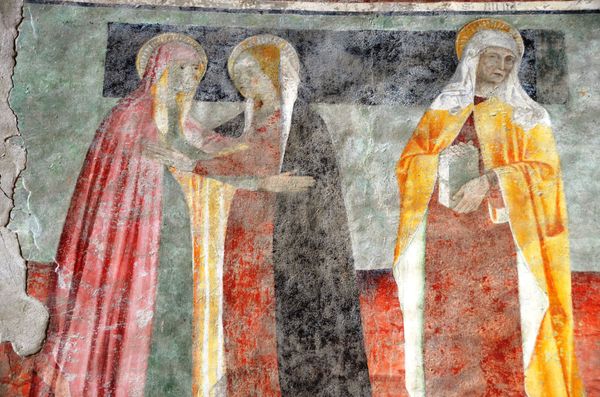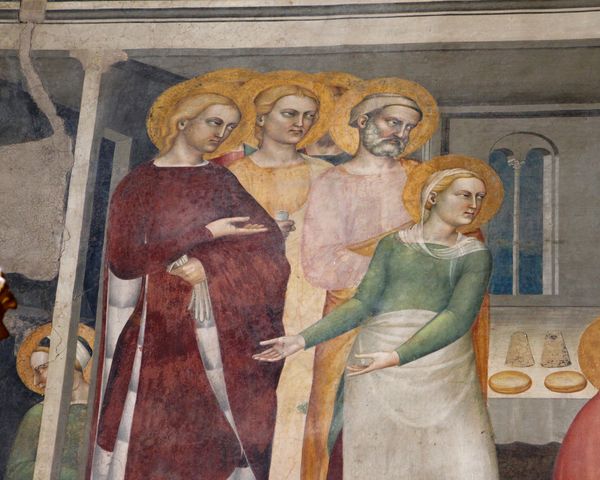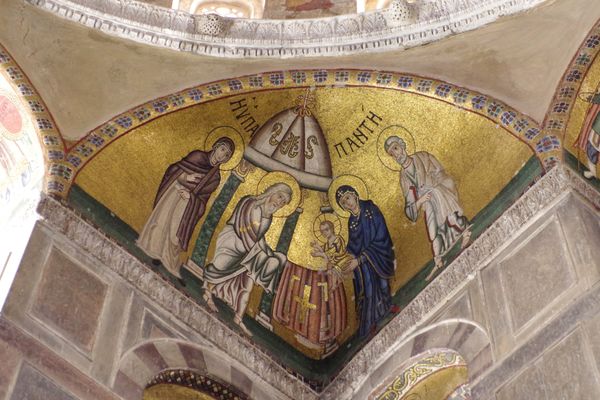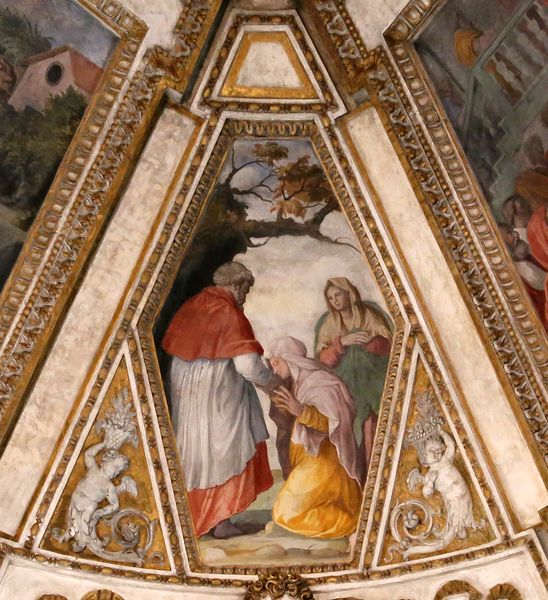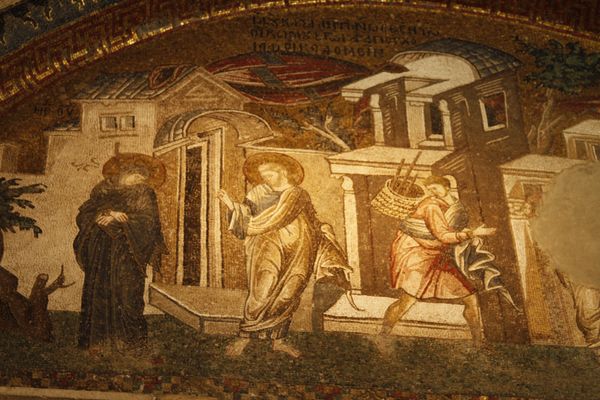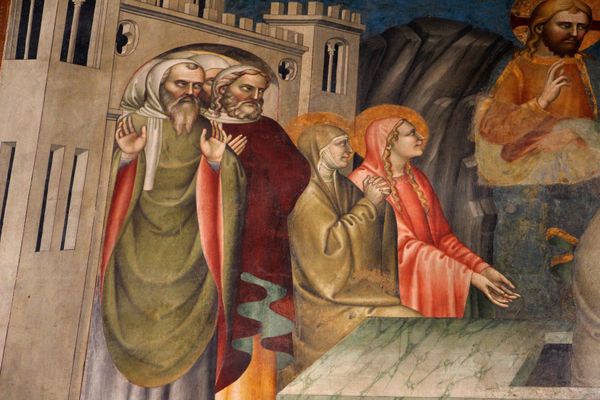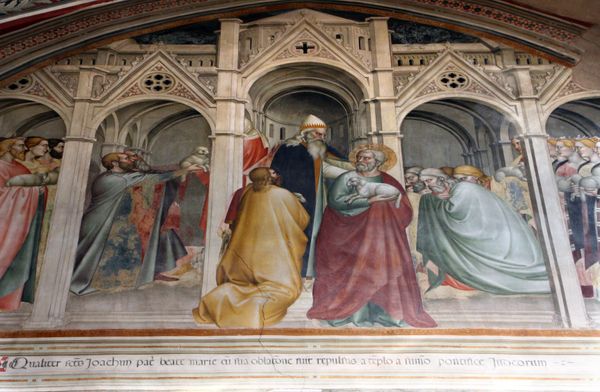
tempera, painting, fresco
#
medieval
#
narrative-art
#
tempera
#
painting
#
holy-places
#
painted
#
figuration
#
fresco
#
oil painting
#
history-painting
#
italian-renaissance
Copyright: Public domain
Editor: This is a fresco painting of the Rinuccini Chapel, found within the Basilica of Santa Croce. Giovanni da Milano painted it around 1370. What strikes me is its depiction of a meeting, heavy with implied narrative and quiet drama. What can you tell me about the fresco? Curator: What interests me about this piece is how it negotiates sacred space. Consider that a wealthy family commissioned it. The placement in the Rinuccini Chapel essentially turns a part of this public basilica into a stage for illustrating their piety and projecting power. The artist utilizes a visual language readily understood by the contemporary viewer: simplified forms, halos signifying sanctity, and hierarchical scale, right? Editor: So, the way it's displayed also carries a lot of meaning, beyond just the image itself. How was this space used by the people of that time? Curator: Precisely! Remember, the basilica was a site of pilgrimage and civic life. A private chapel with elaborate frescoes signaled both wealth and a commitment to religious ideals. It prompts us to ask, whose story is being told here, and for whose benefit? The artist here uses a pre-Renaissance idiom while, say, Giotto's works would appear to be more modern and emotionally realistic to a 21st century audience. Editor: Interesting. Is this stylistic choice related to what a patron wanted in that moment in time? It appears that it straddles both medieval and Italian Renaissance style; a choice, maybe? Curator: Absolutely! The patrons held significant influence on subject, style, and placement; each reflecting the patrons' social and political positions, right? It reflects their conscious engagement with and negotiation within broader social and artistic trends. This blend could have been a deliberate decision to bridge traditions with emerging artistic sensibilities. Editor: I never considered that chapel decoration had a public relations dimension. Curator: In the medieval world, everything had public implications; it was also subject to the Church authorities. Seeing how devotional art functioned as a means to assert power gives you a better understanding of our own, very similar world!
Comments
No comments
Be the first to comment and join the conversation on the ultimate creative platform.

